 "ttyymmnn" (ttyymmnn)
"ttyymmnn" (ttyymmnn)
02/23/2016 at 12:35 • Filed to: planelopnik, planelopnik history
 11
11
 13
13
 "ttyymmnn" (ttyymmnn)
"ttyymmnn" (ttyymmnn)
02/23/2016 at 12:35 • Filed to: planelopnik, planelopnik history |  11 11
|  13 13 |
Welcome to This Date in Aviation History , getting you caught up on milestones, personalities, and important historical events in aviation from February 20 through February 23.
!!! UNKNOWN CONTENT TYPE !!!

February 20, 1959 – The Canadian government cancels the Avro Canada CF-105 Arrow. During the Cold War, and in the days before intercontinental ballistic missiles, aircraft designers on both sides of the ideological divide were looking for ways to deliver nuclear weapons into the deepest reaches of their enemy’s homeland. At the time, the only way to do that was with high-flying bombers that could outrun the fighters sent to stop them, or ones that could fly higher than the interceptors could reach. The shortest Russian route to attack the United States passed over the North Pole, meaning that before reaching the US they would have to pass through Canadian airspace. So maximum effort was carried out to develop interceptors that could reach the bombers before they reached their targets. A.V. Rowe of Canada had already produced Canada’s first indigenous interceptor, the !!!error: Indecipherable SUB-paragraph formatting!!! , but that fighter was incapable of reaching the latest jet-powered Russian bombers. So they began work on a truly supersonic interceptor, one that was built in Canada, meaning that they wouldn’t have to rely on their allies for fighter protection. In April 1953, the Royal Canadian Air Force (RCAF) issued Specification AIR 7-3 which called for a fighter with a two-man crew, a range of 300 miles and a Mach 1.5 cruising speed at an altitude of 70,000 feet. It also specified that the interceptor be able to reach 50,000 feet within five minutes of starting the engines. After visiting other aircraft manufacturers, the RCAF determined that no existing aircraft could meet those specifications. Avro submitted their design, a modified CF-104 (itself a delta-winged upgrade of the CF-100), with the wing moved to the shoulder position and provisions for an internal weapons bay. In 1953, the RCAF accepted Avro’s proposal, and in order to save time, prototype aircraft were built on the same rigs that would be used for production aircraft. Employing state-of-the-art control mechanisms, and making use of titanium and stainless steel in portions of the airframe, the first CF-105 was rolled out on October 4, 1957, and the aircraft went supersonic for the first time on its third flight. But as with so many big budget military programs, politics started throwing roadblocks into the development of the Arrow. Many pointed to the extreme cost of the program, and the fact that the Arrow was diverting funds from other programs. The recent launch of !!!error: Indecipherable SUB-paragraph formatting!!! , and with it the advent of ICBMs, meant that bombers would be playing a reduced role in nuclear attacks, and the creation of NORAD meant that the US would be playing a large role in the defense of Canada. On February 20, 1959, a day known as “Black Friday” in the Canadian aviation industry, the Arrow was canceled. Canadian Prime Minister John Diefenbaker cited costs, as well as threats from ICBMs as the main reasons for the cancellation. There was also evidence that KGB spies had infiltrated the program. Within two months of the announcement, all aircraft, engines, tooling and technical data were destroyed, ostensibly for reasons of national security. Many of the top engineers on the Arrow project left Canada to work for NASA on its manned space program, and the RCAF ended up procuring American fighters such as the !!!error: Indecipherable SUB-paragraph formatting!!! to carry out the mission that had been slated for the Arrow. Ultimately, only 5 Arrows had been completed before cancellation, and only the nose section of Arrow RL-206 and two outer wing panels were saved. They now reside in the Canada Aviation and Space Museum. (Illustration by Dennis Jarvis via !!!error: Indecipherable SUB-paragraph formatting!!! )
!!! UNKNOWN CONTENT TYPE !!!
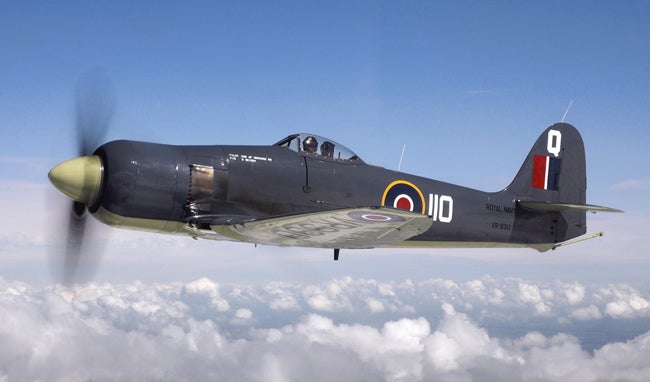
February 21, 1945 – The first flight of the Hawker Sea Fury. By the end of WWII, the jet engine was just coming into vogue and was clearly the powerplant of the future. But the propeller-driven fighter was not yet done. Design of piston-powered fighters reached its zenith late in the war, and a few of the late-war designs continued serving for years to come. Development of the Hawker Fury began in 1942, as the RAF sought a successor to the !!!error: Indecipherable SUB-paragraph formatting!!! fighter bomber and the !!!error: Indecipherable SUB-paragraph formatting!!! fighter. By 1943, the Air Ministry formalized the work already done by Hawker by issuing Specification F.2/43 which called for a fighter with a high rate of climb, good maneuverability and a maximum speed of at least 450 mph at 22,000 feet. The new fighter would pack a punch with four !!!error: Indecipherable SUB-paragraph formatting!!! cannons in the wings and would also be capable of carrying two bombs of up to 1,000 pounds each. Around the same time, Hawker had also received a request for a new carrier based fighter, and famed Hawker designer !!!error: Indecipherable SUB-paragraph formatting!!! saw an opportunity to develop the Fury into both a land-based and carrier-based fighter. The RAF version would be called the Fury, while the Royal Navy version would be called the Sea Fury. With the end of the war, the RAF no longer had a need for a new fighter, so they pulled out of the project. The Navy, however, had fought the war with a combination of lend-lease aircraft that would need to be returned or purchased outright, and the !!!error: Indecipherable SUB-paragraph formatting!!! , a carrier-based version of the !!!error: Indecipherable SUB-paragraph formatting!!! that never quite worked out, as it had been designed first as a land-based fighter and had significant structural weaknesses that were never completely rectified. So development of the Sea Fury went ahead, and Hawker developed the navalized version with an added tailhook and, in later variants, folding wings for carrier storage. The Sea Fury would have the distinction of being the last piston-powered fighter to enter service with the Royal Navy. Production Sea Furies were powered by a !!!error: Indecipherable SUB-paragraph formatting!!! 18-cylinder twin-row radial engine that produced 2,480 hp, and its top speed of 460 mph made it one of the fastest production piston-powered fighters ever produced. Too late for service in WWII, the Sea Fury began joined the Royal Navy in 1951 and saw action over Korea as part of the British forces fighting with the United Nations. There, it served as a ground attack aircraft and performed combat air patrols. And on August 8, 1952, !!!error: Indecipherable SUB-paragraph formatting!!! shot down a Chinese !!!error: Indecipherable SUB-paragraph formatting!!! , becoming one of the few pilots to destroy a jet fighter while flying a propeller fighter. The Sea Fury was also widely exported, and was flown by Cuban exiles during the !!!error: Indecipherable SUB-paragraph formatting!!! in 1961. After its retirement in the mid-1950s, the Sea Fury became a popular civil aircraft, and a number are still flying today on the air show circuit or as modified air racers. (Royal Navy photo)
!!! UNKNOWN CONTENT TYPE !!!
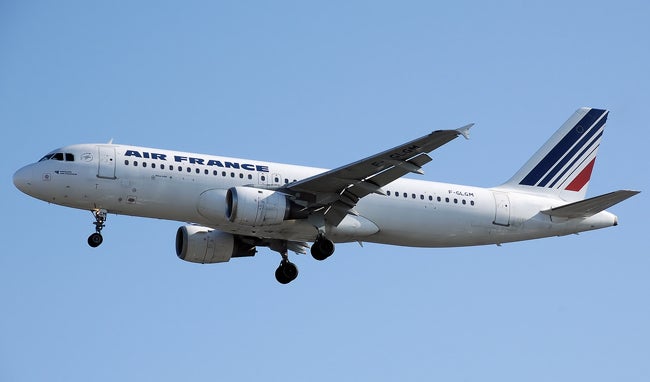
February 22, 1987 – The first flight of the Airbus A320. By the mid-1960s, the international airliner industry was dominated by American companies Boeing, Douglas and Lockheed. European companies had developed some innovative aircraft, but production runs had been small, and there was no sign of European companies breaking into the business in a large way. But by the late 1960s, aviation manufacturers in France, England and Germany, along with their governments, dedicated themselves to challenging American dominance, and Airbus Industrie was formed in 1970. The first aircraft to come out of the partnership was the A300, which took its maiden flight in 1972. It was the world’s first twin-engined widebody airliner and seated up to 266 passengers. But with sales relatively slow, it was clear that what was needed was a smaller, short- to medium-range airliner with smaller seating capacity. Airbus was looking for an aircraft that could compete directly with the widely popular !!!error: Indecipherable SUB-paragraph formatting!!! and !!!error: Indecipherable SUB-paragraph formatting!!! . In fact, they envisioned an entire family of narrow-body, single aisle airliners, and with the launch of the A320 in 1988 with Air France, Airbus was now firmly solidified its status as a major, world-class developer of commercial airliners. At its launc, the A320 was one of the world’s most advanced airliners, and the first to employ digital !!!error: Indecipherable SUB-paragraph formatting!!! technology, something that had up to that time been been reserved for military aircraft. And in another bow to military aircraft design, the A320 would eschew a traditional !!!error: Indecipherable SUB-paragraph formatting!!! for a side joystick control. Unlike other airliners of the time, the pilot of the A320 made control inputs which were then interpreted by a flight control computer, and it was possible for the computer to override the wishes of the pilot if the commands approached the design limits of the aircraft. Before the first A320 took to the skies, Airbus already had more than 400 orders, with many more to come. The first A320 was rolled out on February 14, 1987, and Air France took delivery of the first A320 on March 26, 1988. The A320 was subsequently stretched into the A321 and shortened into the A319 and the A318, and further developments include the A320neo with more efficient engines. The A320 is now the world’s best-selling single-aisle family of aircraft, and as of December 2015, Airbus has nearly 4,500 firm orders for the new engine option. These new aircraft will become part of more than 12,400 overall orders for the entire family of airliners, with 6,876 delivered so far. (Photo by Adrian Pingstone via !!!error: Indecipherable SUB-paragraph formatting!!! )
!!! UNKNOWN CONTENT TYPE !!!
Short Take Off
!!! UNKNOWN CONTENT TYPE !!!
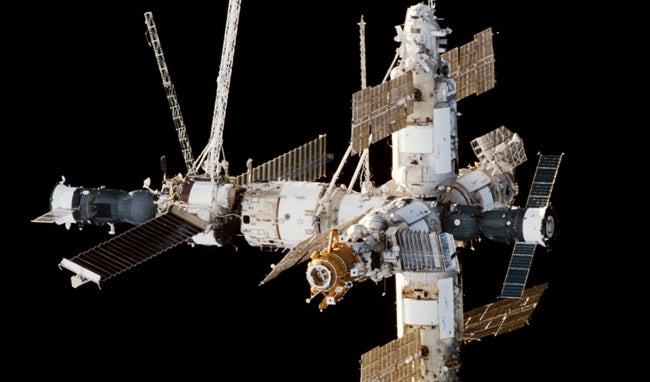
February 20, 1986 – The launch of the Russian space station
Mir
.
Mir
(
Peace
) was a modular space station and, until the construction of the
!!!error: Indecipherable SUB-paragraph formatting!!!
(ISS), was the largest artificial satellite ever placed into Earth orbit.
Mir’s
primary purpose was to serve as a research laboratory to gather data and develop technologies for long-term human habitation of space, and crews set a record of 3,644 days of continuous habitation until that record was broken by the ISS.
Mir
was occupied for a total of 12 and a half years. Following a shift in priority to the ISS, and the loss of funding for
Mir
, the space station was de-orbited in March 2001, with most of the wreckage falling into the South Pacific Ocean.
(NASA photo)
!!! UNKNOWN CONTENT TYPE !!!

February 20, 1939 – The first flight of the Douglas DC-5, a twin-engine airliner developed by Douglas to operate on shorter routes and complement the better-known !!!error: Indecipherable SUB-paragraph formatting!!! and !!!error: Indecipherable SUB-paragraph formatting!!! . With the start of WWII, airlines began canceling orders for new aircraft, thus the DC-5 was never widely adopted. Unlike its siblings, the DC-5 had shoulder-mounted wings and tricycle landing gear. A handful went into airliner service in Europe, and a some were pressed into military service, where it was known as the C-110 in US Army and the R3D in the Navy and Marine Corps. The prototype was sold to William Boeing, who had 16 seats installed and used it as a personal aircraft. After the war, Douglas abandoned the DC-5, as there were so many surplus DC-3s and C-47s available. Only 12 DC-5s were ever built. (Photo by Bill Larkins via !!!error: Indecipherable SUB-paragraph formatting!!! )
!!! UNKNOWN CONTENT TYPE !!!
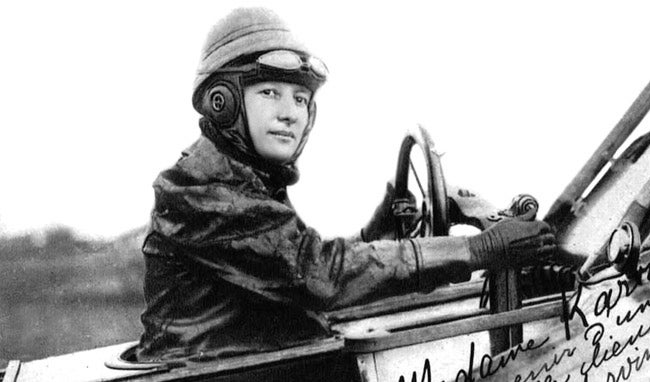
February 20, 1875 – The birth of Marie Marvingt,
a French adventurer, athlete and aviator who won numerous awards for her achievements in sports and aviation. In 1909, she became the first woman to pilot a balloon across the North Sea and the English Channel, and during WWI, Marvingt became the first woman to fly combat missions and the world’s first trained and certified Flight Nurse. Following the war, Marvingt worked to establish air ambulance services around the world, receiving the
Deutsch de la Meurthe
grand prize from the
Fédération Nationale d’Aéronautique
for her work in aviation medicine. Marvingt died on December 14, 1963 at age 88.
(Photo author unknown)
!!! UNKNOWN CONTENT TYPE !!!
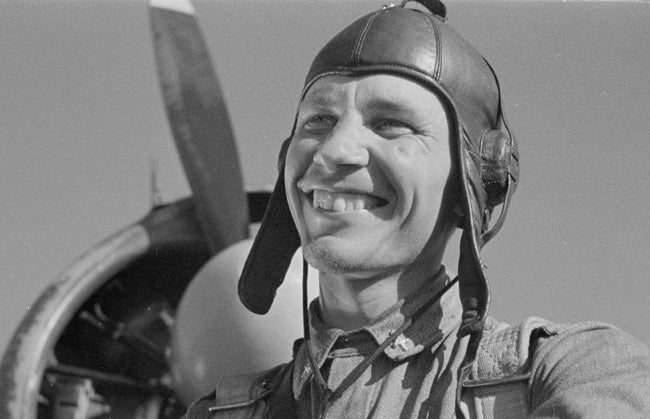
February 21, 1999 – The death of Eino Ilmari Juutilainen.
Born on the same date in 1914, Juutilainen was the greatest ace of the Finnish Air Force (
Ilmavoimat
). By the end of the Finnish wars with Russia (1939–40 and 1941–44), Juutilainen had 94 confirmed kills in 437 sorties, making him the leading non-German ace of WWII (Juutilainen claimed 126 victories). Juutilainen finished the war without a single enemy hit to his airplane, and he never lost a wingman in combat. He also scored the first kill by a Finnish fighter directed by radar when he destroyed a
!!!error: Indecipherable SUB-paragraph formatting!!!
after being guided to the target by a German radar operator. Juutilainen was twice awarded the
!!!error: Indecipherable SUB-paragraph formatting!!!
, the highest Finnish military decoration. His last flight was in 1997 in a two-seat
!!!error: Indecipherable SUB-paragraph formatting!!!
of the Finnish Air Force.
(Photo via
!!!error: Indecipherable SUB-paragraph formatting!!!
)
!!! UNKNOWN CONTENT TYPE !!!
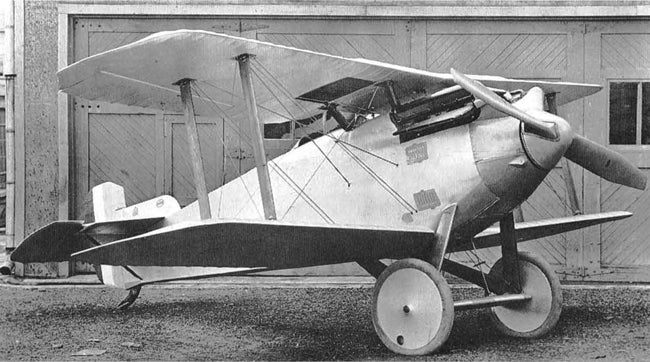
February 21, 1919 – The first flight of the Thomas-Morse MB-3,
a biplane fighter manufactured by Boeing for the US Army Air Service. In 1919, the USAAS requested a new fighter to replace the French
!!!error: Indecipherable SUB-paragraph formatting!!!
that would be powered by the Wright-Hispano H engine, a license-built
!!!error: Indecipherable SUB-paragraph formatting!!!
. Thomas-Morse, who designed the fighter, was underbid by Boeing for the Army production contract, who could manufacture the fighter more economically. Despite serious teething problems with the new aircraft, the MB-3 served as the backbone of USAAS fighter squadrons from 1922-1925. A total of 265 MB-3s were built before the type was retired.
(Photo author unknown)
!!! UNKNOWN CONTENT TYPE !!!

February 21, 1910 – The birth of Douglas Bader,
an RAF fighter ace during WWII who was credited with 22 confirmed kills, four shared victories and 11 damaged enemy aircraft. In 1931, Bader lost both legs in an aerobatic crash, but after his recovery, he rejoined the RAF after the start of WWII. Bader scored victories in the air over Dunkirk and took part in the
!!!error: Indecipherable SUB-paragraph formatting!!!
. In August of 1941, Bader bailed out of his fighter over France and was captured, and despite of his disability, he made numerous escape attempts. He was then held at
!!!error: Indecipherable SUB-paragraph formatting!!!
, where he remained imprisoned until the end of the war. Bader continued flying after the war until poor health forced him to quit flying in 1979. For his war service, Bader was awarded the
!!!error: Indecipherable SUB-paragraph formatting!!!
, the
!!!error: Indecipherable SUB-paragraph formatting!!!
and
!!!error: Indecipherable SUB-paragraph formatting!!!
. Bader died of a heart attack on September 5, 1982.
(Imperial War Museum photo)
!!! UNKNOWN CONTENT TYPE !!!

February 22, 1975 – The first flight of the Sukhoi Su-25. The Su-25, NATO reporting name Frogfoot, is a close air support aircraft developed in the late 1960s to support Soviet ground forces. Inspired by the !!!error: Indecipherable SUB-paragraph formatting!!! tank buster of WWII, the Su-25 is roughly analogous in mission to the !!!error: Indecipherable SUB-paragraph formatting!!! , and entered service in July 1981 during the Soviet !!!error: Indecipherable SUB-paragraph formatting!!! . Since then, it has seen action in many subsequent conflicts during its 35 years of service. The Su-25 has been produced in numerous variants, including a two-seat trainer version, and has received continuous upgrades in avionics and weapons capabilities. Over 1,000 have been built to date, and the Su-25 remains in production. (Photo by Aleksander Markin via !!!error: Indecipherable SUB-paragraph formatting!!! )
!!! UNKNOWN CONTENT TYPE !!!
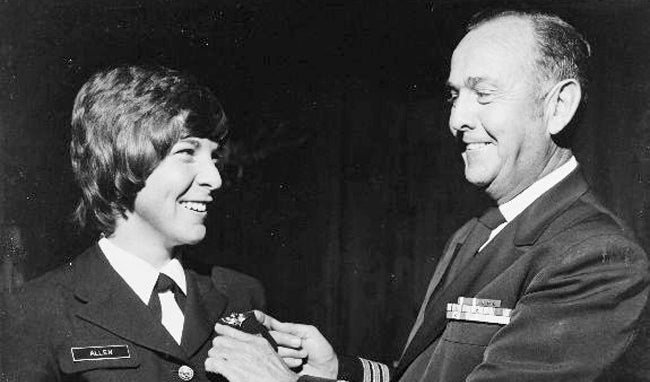
February 22, 1974 – US Navy LTJG Barbara Ann Allen becomes the first female aviator in the US Armed Forces
and the first woman to be qualified as a military jet pilot. Allen and seven other female classmates entered US Naval Flight Training School on March 2, 1973 and Allen was the first in her class to be awarded her wings. She was first certified to fly the
!!!error: Indecipherable SUB-paragraph formatting!!!
, then became the first jet qualified female pilot when she was certified to fly the
!!!error: Indecipherable SUB-paragraph formatting!!!
. After marrying, she entered the Naval Reserves, where she qualified on the
!!!error: Indecipherable SUB-paragraph formatting!!!
. In 1977, due to a shortage of instructor pilots, Rainey returned to active duty as an instructor on the
!!!error: Indecipherable SUB-paragraph formatting!!!
. She was killed in a training crash on July 13, 1982 while practicing touch-and-go landings with a student pilot.
(US Navy photo)
!!! UNKNOWN CONTENT TYPE !!!
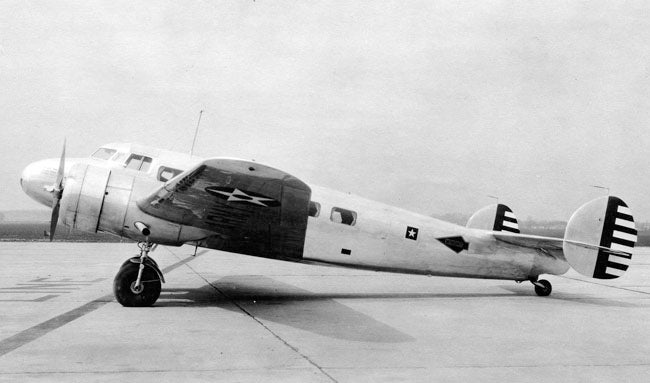
February 23, 1934 – The first flight of the Lockheed Model 10 Electra,
Lockheed’s first twin-engine, all-metal monoplane airliner that was developed to compete with the
!!!error: Indecipherable SUB-paragraph formatting!!!
and
!!!error: Indecipherable SUB-paragraph formatting!!!
. The Model 10 suffered from early problems with stability, problems that were solved by a brilliant young engineer named
!!!error: Indecipherable SUB-paragraph formatting!!!
, the man who would later lead Lockheed’s famous
!!!error: Indecipherable SUB-paragraph formatting!!!
. Following the US ban on single-engine passenger aircraft, Lockheed’s Electra became one of the more popular new aircraft with the budding airline industry, and many Electras went were also flown by private pilots, including
!!!error: Indecipherable SUB-paragraph formatting!!!
. Earhart was flying an Electra when she disappeared on her attempt to circumnavigate the globe. A total of 149 Electras were produced.
(US Air Force photo)
!!! UNKNOWN CONTENT TYPE !!!
!!! UNKNOWN HEADER TYPE (MULTI-LINE BREAK?) !!!
!!! UNKNOWN CONTENT TYPE !!!
!!! UNKNOWN CONTENT TYPE !!!
!!! UNKNOWN CONTENT TYPE !!!
!!! UNKNOWN CONTENT TYPE !!!
!!! UNKNOWN CONTENT TYPE !!!
If you enjoy these Aviation History posts, please let me know in the comments. And if you missed any of the past articles, you can find them all at
!!!error: Indecipherable SUB-paragraph formatting!!!
.
!!! UNKNOWN CONTENT TYPE !!!
 Smallbear wants a modern Syclone, local Maple Leafs spammer
> ttyymmnn
Smallbear wants a modern Syclone, local Maple Leafs spammer
> ttyymmnn
02/23/2016 at 13:05 |
|
The cancellation of the Arrow was absolutely idiotic. There were two main reasons for this.
First, politics.
Second, lack of understanding on the part of politicians. One of the reasons cited was we didn’t need interceptors anymore as bombers were obsolete. Of course, we then found out they weren’t and we had to aquire some vastly inferior Voodoo’s. Another reason was the lack of range. This claim was based on the fact that it would run out of fuel in 20 minutes running on full afterburner, and to the politicians that sounded pretty small. Of course they never actually bothered to do their homework—for comparison, the Voodoo would run out in 10 minutes, while traveling at a lower speed. And so it goes on...
The Arrow could have kicked a whole lot of ass. In fact, with some avionics updates, it’s probably still competitive. I’ll leave you with a few facts and figures. Very little testing with the Iroquois engines was done before the project was cancelled. The (insert test engines used here, I believe they were J75's) produced 12,500 lbs dry thrust and 18,000 on full afterburner. The Iroquois were 20,000 dry and 25,000 with afterburner. Couple this with the fact that the J75's(?) were heavier and required nose ballast while testing and fill in the blanks.
 Smallbear wants a modern Syclone, local Maple Leafs spammer
> ttyymmnn
Smallbear wants a modern Syclone, local Maple Leafs spammer
> ttyymmnn
02/23/2016 at 13:09 |
|
Also, I’ve never noticed that gap in the DC-x chain. Interesting how the DC-5 flew under the radar like that.
 ttyymmnn
> Smallbear wants a modern Syclone, local Maple Leafs spammer
ttyymmnn
> Smallbear wants a modern Syclone, local Maple Leafs spammer
02/23/2016 at 13:13 |
|
Bad timing. I wonder if it would have been more successful if the war hadn’t happened when it did. Allegedly, that paint scheme was used to make the plane appear smaller, though I’m not sure why you’d want to do that. It’s not a wartime camouflage.
 phenotyp
> ttyymmnn
phenotyp
> ttyymmnn
02/23/2016 at 13:14 |
|
Love the Sea Fury. I saw one fly, then belly-land (one of the main gear wouldn’t extend fully) at Oshkosh many years ago. They picked it up, extended the gear, hammered out the prop, and flew it home.
 ttyymmnn
> phenotyp
ttyymmnn
> phenotyp
02/23/2016 at 13:40 |
|
They don’t build ‘em like they used to.
 RallyDarkstrike - Fan of 2-cyl FIATs, Eastern Bloc & Kei cars
> ttyymmnn
RallyDarkstrike - Fan of 2-cyl FIATs, Eastern Bloc & Kei cars
> ttyymmnn
02/23/2016 at 16:07 |
|
It was before my time, but the Arrow is still by far one of my favorite Aircraft, and not just because I’m Canadian (although there is a lot of pride there...)
I wish there was a company somewhere that could build just one functioning full-scale replica like is being done with the Bugatti P100...
 ttyymmnn
> RallyDarkstrike - Fan of 2-cyl FIATs, Eastern Bloc & Kei cars
ttyymmnn
> RallyDarkstrike - Fan of 2-cyl FIATs, Eastern Bloc & Kei cars
02/23/2016 at 16:11 |
|
Unfortunately, all the tooling and assembly rigs were destroyed when the program was scrapped. I
think
there might be a full-scale replica somewhere.
As an armchair aviation historian, the 50s is by far my favorite era of aviation. Slide rules, wind tunnels, no computers. It seems like so much of the era was, “Let’s see what happens if we do
this
.” Virtually unlimited Cold War budgets, particularly in the US, meant that just about every hairbrained idea could be built and tested. And the real heroes were the test pilots, the guys who must have thought, “You want me to fly
that
?” Yet they still strapped in and went flying. Hell of an era.
 user314
> ttyymmnn
user314
> ttyymmnn
02/23/2016 at 18:24 |
|
The first flight of the Sukhoi Su-25
Which just happened to closely resemble the YA-9 , Northrop‘s losing entry in the A-X program...
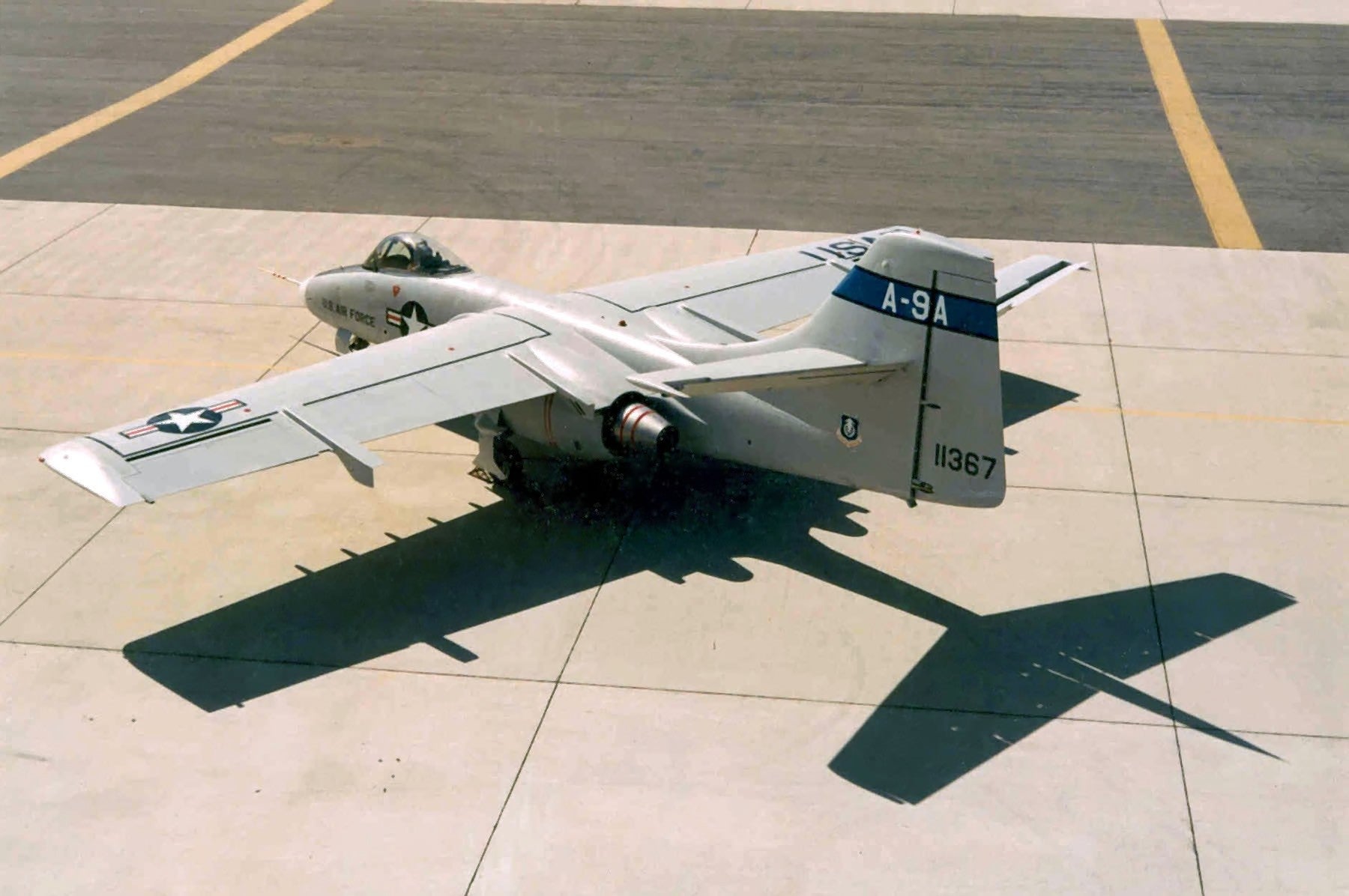
 ttyymmnn
> user314
ttyymmnn
> user314
02/23/2016 at 18:30 |
|
Nothing to see here. Move along. Move along. On the other hand, form follows function.
 user314
> ttyymmnn
user314
> ttyymmnn
02/23/2016 at 21:59 |
|
See, I’ll buy that on the Buran, and maybe the Tu-144 if I’m feeling generous, but the Su-25 and the T-4 are just naked copies of other designs.
 The Compromiser
> ttyymmnn
The Compromiser
> ttyymmnn
02/23/2016 at 23:01 |
|
About the Arrow;I’ve seen part of the cockpit. Your data may be inaccurate. I will have to check my pictures.
 ttyymmnn
> The Compromiser
ttyymmnn
> The Compromiser
02/23/2016 at 23:45 |
|
By nose, I meant this. So the cockpit exists
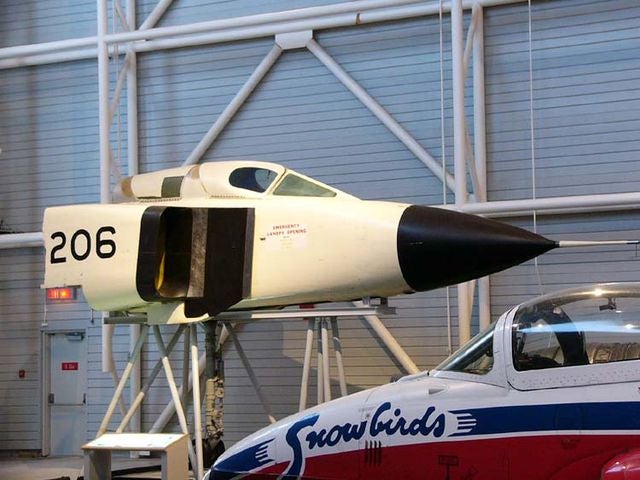
 The Compromiser
> ttyymmnn
The Compromiser
> ttyymmnn
02/24/2016 at 08:04 |
|
That is more than i thought they would have., and I’ve been there. The Warplane heritage Museum in Hamilton On has IIRC just the front cockpit glass. It is tucked away but out in the open. Typical Canadian bravado...